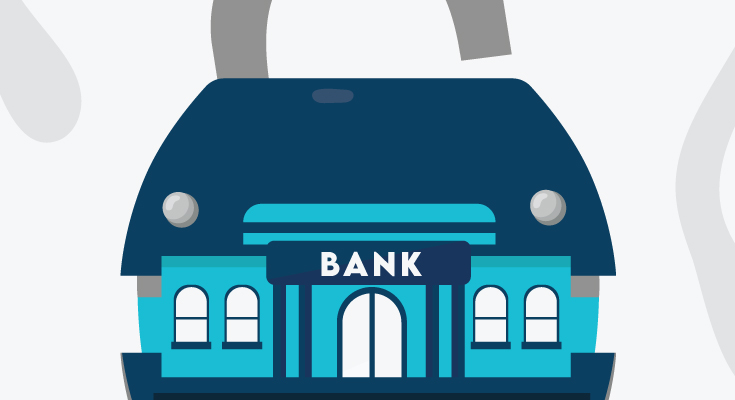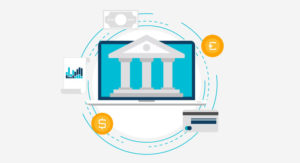Future of Open Banking: Why Banks Need to Take the First Step?

The digital revolution for banks and financial institutions is underway at full speed. While the major tipping point for digital transformation in the financial industry was the COVID-19 pandemic, the seeds of a secure and agile digital environment were available in the industry. Banks and financial institutions were trying their best to keep up with the increasing rate of demand for digital services.
The events of 2020 only pushed the already existing demand for digital transactions and interactions. As banks and financial institutions make way toward digitization, the concept of Open Banking and Open Finance seems even more enticing. Open Banking is sure to help banks stay competitive, provide a series of personalized products and services and enhance the financial institutions to a greater level.
Open banking is enabling banks to be more innovative and try a thing that has never been tried before. The slow yet steady shift to open banking is underway in Europe, Hong Kong, and Singapore. Consumer protection rights, especially PSD2 which was released in January 2018, are the primary reason behind the adoption of Open Banking in Europe. After President Joe Biden’s statement, the use of Open Banking is well on its way to the USA as well. With a focus on increasing innovation and competition among banks, PSD2 made Open Banking API mandatory for banks operating in the EU.
The result of this has been a sudden surge in consumer-focused FinTech technologies all revolving around open banking API standards. Open Banking APIs like document verification API, utility bill verification API, and bank account verification APIs can help banks streamline their toughest tasks (complying with KYC and AML regulations).
Benefits of Open Banking
Open Banking isn’t only for benefiting consumers, the shift towards open banking has given birth to dozens of new FinTechs that are focused on building new solutions that can enhance banking operations. Open Banking APIs are creating a new ecosystem for small, medium, and large-scale businesses that can benefit directly by connecting APIs to financial businesses or using the endless data available to provide personalized services to customers.
While the whole financial industry can benefit from the use of open banking, banks can make themselves the gatekeepers of the one essential key in open banking: Data. Banks can also utilize this new technology to its extent and enhance their customer business relationships by assisting customers in managing their finances better rather than being a medium for financial transactions.
Additionally, open banking will allow retail and commercial clients to choose from a broader set of products and services rather than settling for the only option available. The new connectivity among consumers and third-party service providers that open banking will make possible will make things better for clients as data sharing will lead to faster lending, smarter lending, and better credit-worthiness assessments.
Regulatory bodies are already working on guidance for Open banking in the USA, and banks will have the choice of whether or not to invest in this new technology to enhance the customer experience and build a better financial industry.
According to some industry experts, banks that won’t welcome Open Banking with open arms will only be limiting their customer interactions and also limit the opportunity to be the leader in this newly emerging market. Instead of being unprepared when the regulatory bodies in the USA release guidance for Open banking APIs, banks should start preparing in advance and build their strategies in a way that they can make the most of Open Banking.
Open Banking is Inevitable
There’s already widespread use of online document verification APIs, Proof of address verification API by leading banks and financial institutions. Currently, the EU and the UK are the most dynamic market in open banking all thanks to the EU Policies that facilitated the widespread use of open banking APIs. The Second Payments Services Directive (PSD2) required banks operating under the EU to allow licensed third-party payment providers to bank’s infrastructure and data using a specific open banking API protocol.
By 2022, open banking is expected to generate over $9 billion of profit opportunities for financial service providers. While the US has yet to take a new approach, to generate the same amount of revenue, USA banks need to embrace open banking.
In the USA, the need for open banking, and open banking APIs has been pushed forward by consumer and business demand. This enhanced level of demand with an enhanced level of activity in the Atlantic is enough for the US to adopt Open Banking. Up until now, the move toward Open Banking has been driven only by regulation, but there’s another approach that banks can take and embrace the Open Banking landscape without government rules and regulations.
How Banks in the USA Can Seize the Opportunity?
Before pouring millions of dollars into building technologies that can support open banking, the first thing that banks in the USA need to do is to build their strategies. Leaders first identify how open banking can drive value for the bank and what type of return on investment banks can expect, both in terms of revenue and customer loyalty.
The overall methodology requires banks to secure funding for new investments but also align multiple departments that will be working relentlessly to drive success for the Open Banking infrastructure. It’s a good option for banks to survey customers to gain insights into the type of tools and services they would want to provide their financial data. Mid-market banks on the other hand should use foundational data capabilities to utilize the benefits of open banking. A condition to successfully leverage open banking and gain all the benefits is that banks, financial institutions, and third-party payment providers are to protect customer data at all costs. This isn’t just a requirement for open banking, this is a practice that every bank or financial institution should use.
In the future, banks will want to focus their investment on their internal infrastructure and ensure that tools, policies, and procedures are in place to support the open banking infrastructure.













